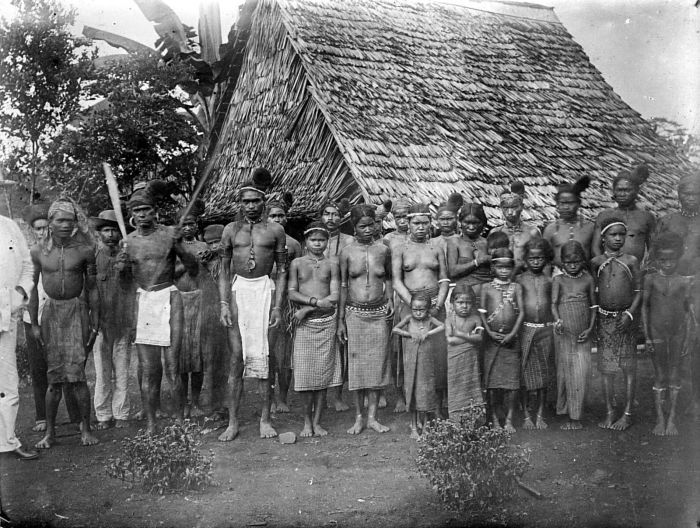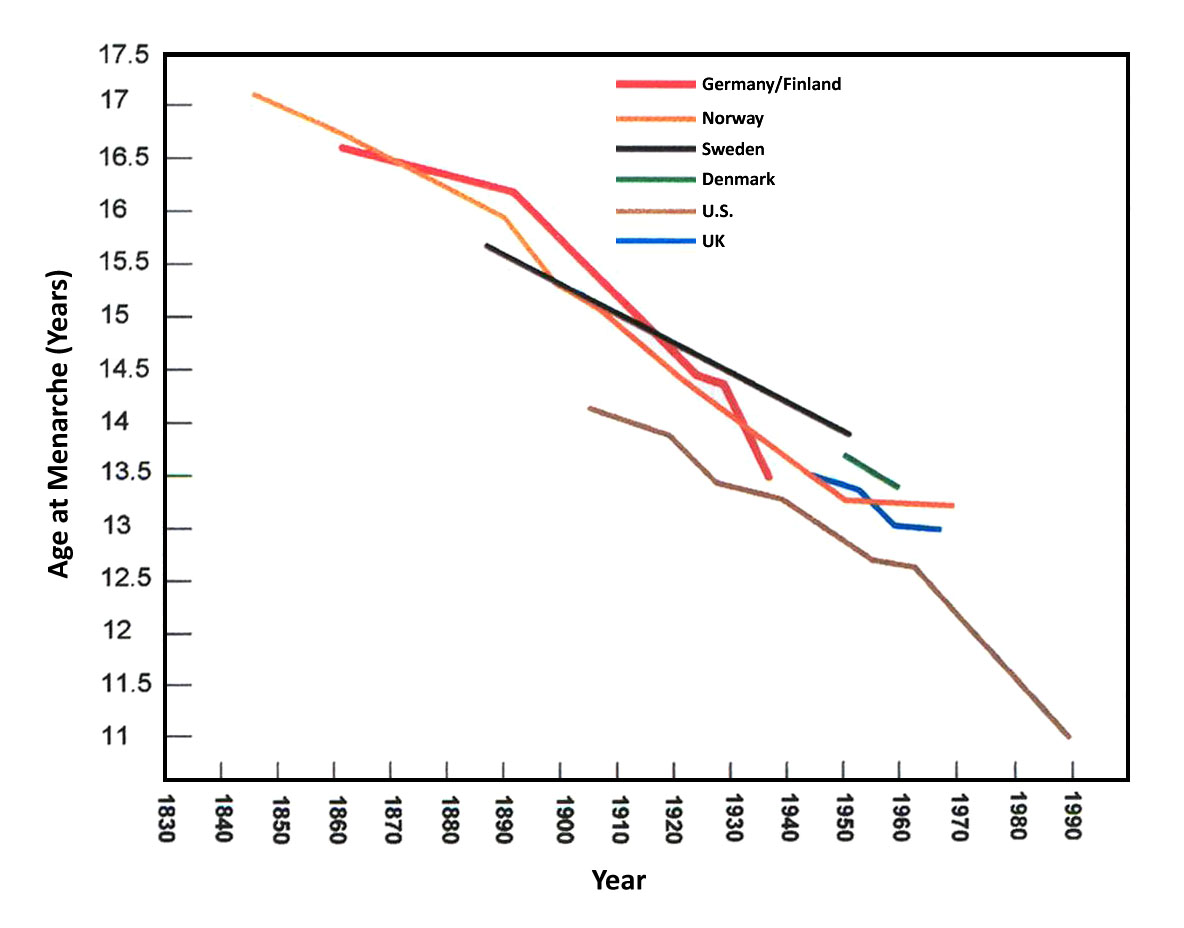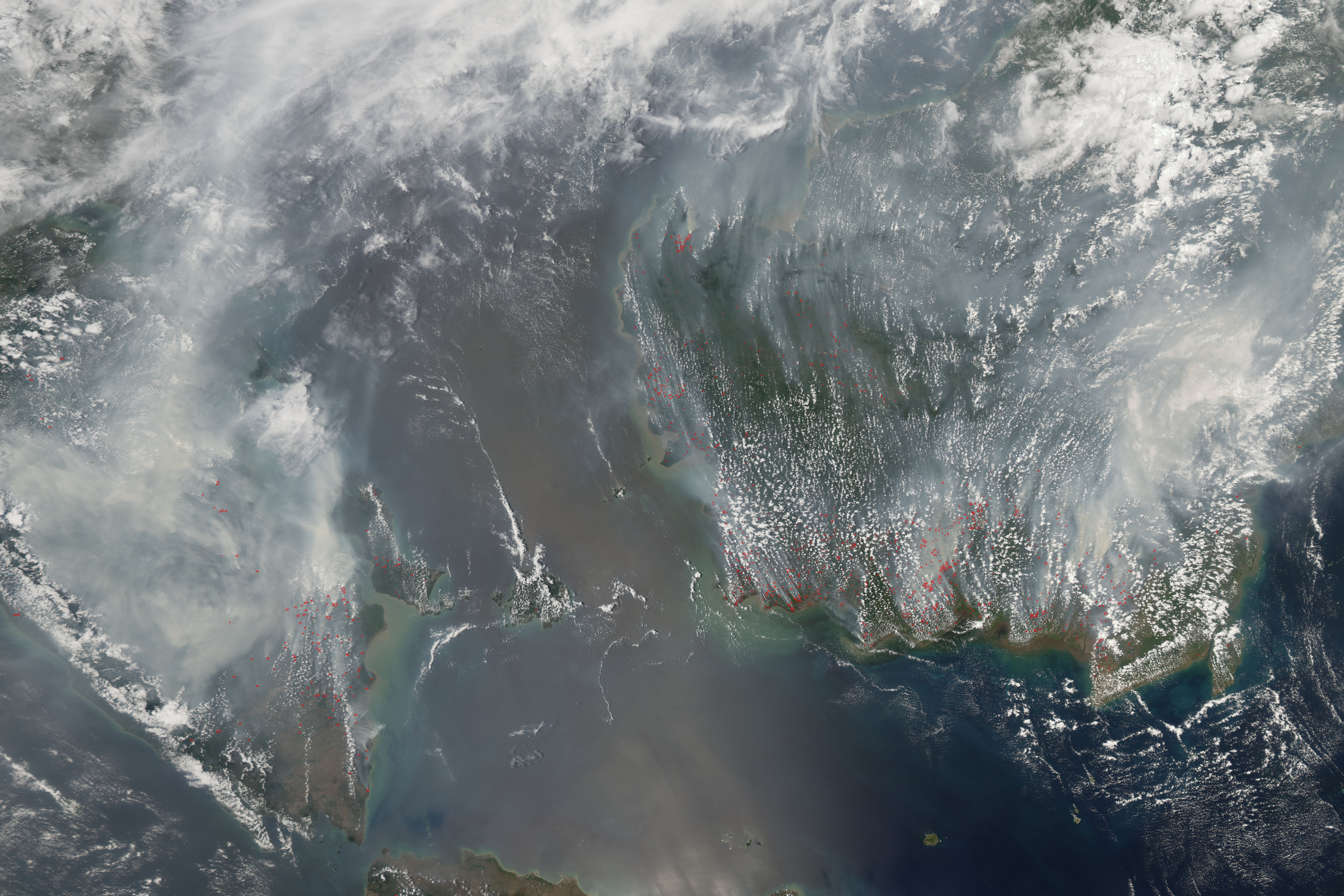|
Wemale People
The Wemale people are an ethnic group of Seram Island, Indonesia. They number over 7,500 and live in 39 villages of the central area of the island. Like the Alune people in the west, the Wemale people originate from a common ancestral group called the Patasiwa. The Wemale language is of Malayo-Polynesian origin and it is divided into a northern and a southern variety, having dialects known as Horale, Kasieh, Uwenpantai, Honitetu and Kawe. Northern Wemale is spoken by about 5,000 people and the Southern Wemale is spoken by about 3,700 people. The Hainuwele legend is an origin myth from the Wemale and Alune folklore. It was recorded by German ethnologist Adolf Ellegard Jensen in a 1937–1938 expedition to the Maluku Islands. Description Traditionally the Wemale lived off forest products. Much of their diet was based on the sago palm. They also practiced shifting cultivation. Males used to engage in warrior activities against neighboring groups. Females used to spend mos ... [...More Info...] [...Related Items...] OR: [Wikipedia] [Google] [Baidu] |
Hainuwele
Hainuwele, "The Coconut Girl", is a figure from the Wemale and Alune folklore of the island of Seram in the Maluku Islands, Indonesia. Her story is an origin myth. The myth of Hainuwele was recorded by German ethnologist Adolf E. Jensen following the Frobenius Institute's 1937–8 expedition to the Maluku Islands. The study of this myth during his research on religious sacrifice led Jensen to the introduction of the concept of Dema Deity in ethnology. Joseph Campbell first narrated the Hainuwele legend to an English-speaking audience in his work ''The Masks of God''. Myth While hunting one day a man named Ameta found a coconut, something never before seen on Seram, that had been caught in the tusk of a wild boar. Ameta, who was part of one of the original nine families of the West Ceram people who had emerged from bananas, took the coconut home. That night, a figure appeared in a dream and instructed him to plant the coconut. Ameta did so, and in just a few days the coconut g ... [...More Info...] [...Related Items...] OR: [Wikipedia] [Google] [Baidu] |
Alfur People
Alfur, Alfurs, Alfuros, Alfures, Aliforoes, Alifuru or Horaforas (in Dutch, ''Alfoeren'') people is a broad term recorded at the time of the Portuguese seaborne empire to refer all the non-Muslim, non-Christian peoples living in inaccessible areas of the interior in the eastern portion of Maritime Southeast Asia. Etymology Several origins for the term Alfur have been proposed, including from Spanish, Portuguese, and even Arabic. The most likely hypothesis however is that it originated from Tidorese ''halefuru'', a compound composed of the stems ''hale'' "land" and ''furu'' "wild, savage". From Tidore it was adopted and used by Malay traders and the Portuguese, Spanish and Dutch adventurers and colonists who came to the Spice Islands. The term referred to certain lands and their inhabitants that were considered "wild", "untamed" or "pagan", particularly in regions that fell under the influence of Tidore and neighboring Ternate. The term was thus especially used of peoples in th ... [...More Info...] [...Related Items...] OR: [Wikipedia] [Google] [Baidu] |
Maluku Islands
The Maluku Islands (; Indonesian: ''Kepulauan Maluku'') or the Moluccas () are an archipelago in the east of Indonesia. Tectonically they are located on the Halmahera Plate within the Molucca Sea Collision Zone. Geographically they are located east of Sulawesi, west of New Guinea, and north and east of Timor. Lying within Wallacea (mostly east of the biogeographical Weber Line), the Maluku Islands have been considered as a geographical and cultural intersection of Asia and Oceania. The islands were known as the Spice Islands because of the nutmeg, mace and cloves that were exclusively found there, the presence of which sparked colonial interest from Europe in the sixteenth century. The Maluku Islands formed a single province from Indonesian independence until 1999, when it was split into two provinces. A new province, North Maluku, incorporates the area between Morotai and Sula, with the arc of islands from Buru and Seram to Wetar remaining within the existing Maluku Province. ... [...More Info...] [...Related Items...] OR: [Wikipedia] [Google] [Baidu] |
Menarche
Menarche ( ; ) is the first menstrual cycle, or first menstrual bleeding, in female humans. From both social and medical perspectives, it is often considered the central event of female puberty, as it signals the possibility of fertility. Girls experience menarche at different ages. Having menarche occur between the ages of 9–16 in the west is considered normal.US National Health Statistics Report September 2020 Canadian psychological researcher Niva Piran claims that menarche or the perceived average age of puberty is used in many cultures to separate girls from activity with boys, and to begin confinement as a woman and future wife. The timing of menarche is influenced by female , as we ... [...More Info...] [...Related Items...] OR: [Wikipedia] [Google] [Baidu] |
Girdle
A belt, especially if a cord or rope, is called a girdle if it is worn as part of Christian liturgical vestments, or in certain historical, literary or sports contexts. Girdles are used to close a cassock in Christian denominations, including the Anglican Communion, Catholic Church, Methodist Church and Lutheran Church. The girdle, in the 8th or 9th century, was said to resemble an ancient Levitical Jewish vestment, and in that era, was not visible. In 800 AD, the girdle began to be worn by Christian deacons in the Eastern Church. The girdle, for men, symbolizes preparation and readiness to serve, and for women, represents chastity and protection; it was also worn by laypersons in the Middle Ages, as attested in literature. For example, the hagiographical account of Saint George and the Dragon mentions the evildoer being tamed with the sign of the cross and a girdle handed to Saint George by a virgin. History The men among the Greeks and Romans wore the girdle upon the loins, ... [...More Info...] [...Related Items...] OR: [Wikipedia] [Google] [Baidu] |
Rattan
Rattan, also spelled ratan, is the name for roughly 600 species of Old World climbing palms belonging to subfamily Calamoideae. The greatest diversity of rattan palm species and genera are in the closed-canopy old-growth tropical forests of Southeast Asia, though they can also be found in other parts of tropical Asia and Africa. Most rattan palms are ecologically considered lianas due to their climbing habits, unlike other palm species. A few species also have tree-like or shrub-like habits. Around 20% of rattan palm species are economically important and are traditionally used in Southeast Asia in producing wickerwork furniture, baskets, canes, woven mats, cordage, and other handicrafts. Rattan canes are one of the world's most valuable non-timber forest products. Some species of rattan also have edible scaly fruit and heart of palm. Despite increasing attempts in the last 30 years at commercial cultivation, almost all rattan products still come from wild-harvested plants. ... [...More Info...] [...Related Items...] OR: [Wikipedia] [Google] [Baidu] |
Shifting Cultivation
Shifting cultivation is an agricultural system in which plots of land are cultivated temporarily, then abandoned while post-disturbance fallow vegetation is allowed to freely grow while the cultivator moves on to another plot. The period of cultivation is usually terminated when the soil shows signs of exhaustion or, more commonly, when the field is overrun by weeds. The period of time during which the field is cultivated is usually shorter than the period over which the land is allowed to regenerate by lying fallow. This technique is often used in LEDCs (Less Economically Developed Countries) or LICs (Low Income Countries). In some areas, cultivators use a practice of slash-and-burn as one element of their farming cycle. Others employ land clearing without any burning, and some cultivators are purely migratory and do not use any cyclical method on a given plot. Sometimes no slashing at all is needed where regrowth is purely of grasses, an outcome not uncommon when soils are ... [...More Info...] [...Related Items...] OR: [Wikipedia] [Google] [Baidu] |
Sago
Sago () is a starch extracted from the pith, or spongy core tissue, of various tropical palm stems, especially those of ''Metroxylon sagu''. It is a major staple food for the lowland peoples of New Guinea and the Maluku Islands, where it is called ''saksak'', ''rabia'' and ''sagu''. The largest supply of sago comes from Southeast Asia, particularly Indonesia and Malaysia. Large quantities of sago are sent to Europe and North America for cooking purposes. It is traditionally cooked and eaten in various forms, such as rolled into balls, mixed with boiling water to form a glue-like paste ( papeda), or as a pancake. Sago is often produced commercially in the form of "pearls" (small rounded starch aggregates, partly gelatinized by heating). Sago pearls can be boiled with water or milk and sugar to make a sweet sago pudding. Sago pearls are similar in appearance to the pearled starches of other origin, e.g. cassava starch (tapioca) and potato starch. They may be used interchang ... [...More Info...] [...Related Items...] OR: [Wikipedia] [Google] [Baidu] |
Adolf E
Adolf (also spelt Adolph or Adolphe, Adolfo and when Latinised Adolphus) is a given name used in German-speaking countries, Scandinavia, the Netherlands and Flanders, France, Italy, Spain, Portugal, Latin America and to a lesser extent in various Central European and East European countries with non-Germanic languages, such as Lithuanian Adolfas and Latvian Ādolfs. Adolphus can also appear as a surname, as in John Adolphus, the English historian. The female forms Adolphine and Adolpha are far more rare than the male names. The name is a compound derived from the Old High German ''Athalwolf'' (or ''Hadulf''), a composition of ''athal'', or ''adal'', meaning "noble" (or '' had(u)''-, meaning "battle, combat"), and ''wolf''. The name is cognate to the Anglo-Saxon name '' Æthelwulf'' (also Eadulf or Eadwulf). The name can also be derived from the ancient Germanic elements "Wald" meaning "power", "brightness" and wolf (Waldwulf). Due to negative associations with Adolf Hitl ... [...More Info...] [...Related Items...] OR: [Wikipedia] [Google] [Baidu] |





_with_fruits_(7844049166).jpg)

_in_New_Guinea.jpg)